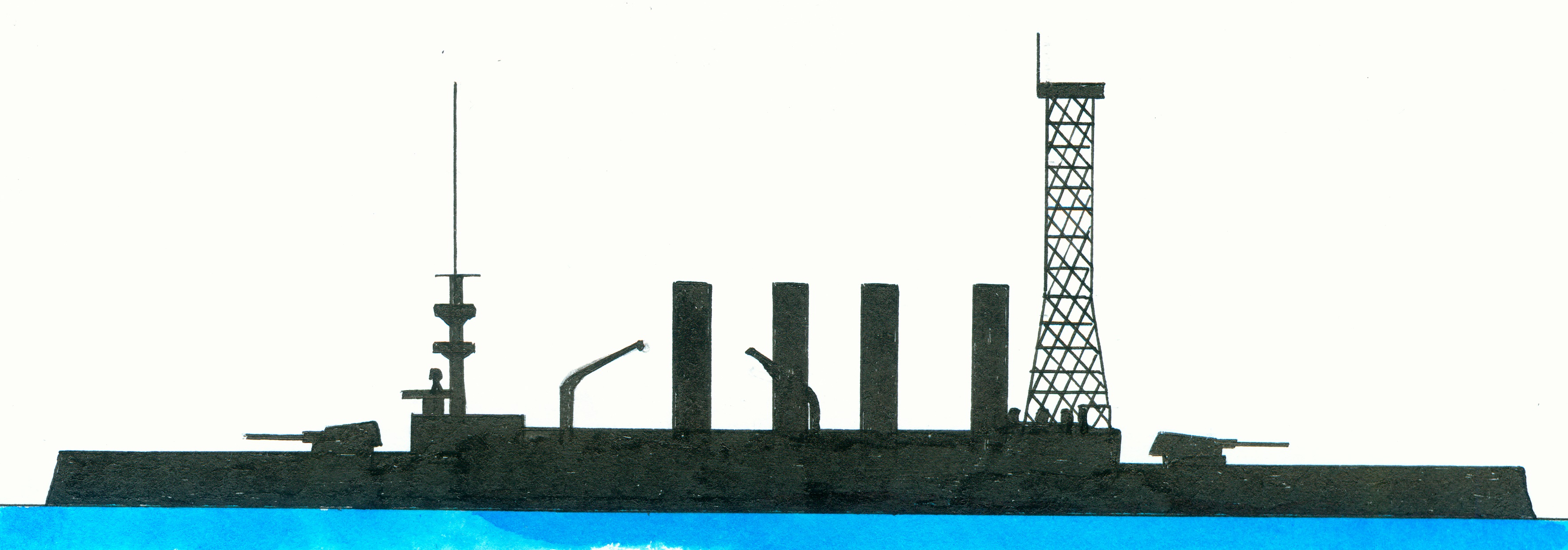USS Brooklyn
Pennsylvania-class
Tennessee-class
Displacement 13.900 (standard)-15.381 (full load) tons and as dimensions 153 (between perpendiculars)-153,59 (over all) x 21,18 x 7,34 (mean) metres or 502-503.11’ x 69.6’x 24.1’. The machinery consisted of 2 vertical inverted triple expansion steam engines and 32 Babcock&Wilcox-boilers supplying 23.000 ihp (design) driving 2 screws allowing a speed of 22-22,4 (trials) knots. Coal bunker capacity 900 (normal)-2.000 (maximum) tons. Aft 1911 16 Babcock&Wilcox boilers. Her crew numbered 830 men. The armour consisted of a 13/5” (bottom)-15.6“ (top and waterline) thick belt, a 3,8cm/1.5” (flat)-10,2cm/4” (slope) deck with the turrets, barbettes and conning tower protected by respectively 16,5cm/6.5”, 15cm/6” and 22,9cm/9” thick armour. The original armament consisted of 2x2-20,3cm/8” /40 cal Mark 5 guns, 14-15,2cm/6” /50 cal Mark 6 guns, 18-7,6cm/3” /50 cal quick firing guns, 12-4,7cm/1.9”/3pd Driggs-Schroeder quick firing guns, 2-3,7cm/1.5”/1pd saluting guns and 2-45,7cm/18” torpedo tubes. Between 1909-1911 were the 8” guns replaced by 45 cal Mark 6 guns. During the First World War were 10-6” guns removed to arm merchant ships, further more were the 8-3” singe purpose guns replaced by 2-7,6cm/3” anti aircraft guns. Except for the lost San Diego were all 6” guns replaced around 1921. The armament consisted since of 2x2-20,3cm/8” /45 cal Mark 6 guns, 14-15,2cm/6” /50 cal Mark 6 guns, 10-7,6cm/3” /50 cal quick firing guns, 2-7,6cm/3” /50 cal anti aircraft guns, 4-4,7cm/3pd Driggs-Schroeder saluting guns and 2-45,7cm/18” torpedo tubes. Except for the lost San Diego were all 6” guns replaced around 1921.



